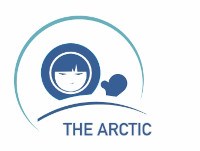It is assumed from Stone Age carvings that ancient northern people knew about whales. It is unsure if they hunted them but whale strandings must have been utilized. Nearshore whaling, similar as still conducted in the Faroes, was known from Norway in the 9th century and must at a similar time have been conducted by the Inuit as well. This type of whaling has always been important for the people living in the north.
However, large-scale commercial whaling began much later. In the 16th century, Basque fishermen from Spain, who hunted whales in the Bay of Biscay and were already fishing cod near Newfoundland, began to hunt whales in the north. According to written accounts and archaeological evidence they hunted around 450 whales annually. The species were the closely related northern right whale and the bowhead whale. These were the “right” species as they are slow and fat. The whales were mostly hunted for the fat that gave the valuable oil.
The right whales were found all over the world but were most common in temperate and subarctic waters. However, the Bowheads are pure Arctic animals and whaling stations were operated in Spitzbergen and Jan Mayen to process those.
The whaling by the Basques was immensely profitable and other European nations therefore followed suit later. This early commercial whaling did already deplete the Northern European right and bowhead whale stocks by the 1650´s and the whalers had to seek the whales further and further away and into more and more dangerous waters.
It was only in the late 19th century that whaling on the rorquals (essentially all the other baleen whales) began. They were too fast and strong for the sailing ships and were only hunted after the Norwegians invented the explosive harpoon (that killed the whales quickly) and used them on steamships. These whales are found all over the world but the main hunting grounds were in the subarctic waters both in the northern and southern hemisphere where these species aggregate in the summer to feed in the bountiful waters.
As the whaling was not managed in those days the same story followed as for the right whales, the stocks were overexploited severely. After 1950 most of the whaling in the North Atlantic has been managed carefully and it has been illegal to hunt many species. Today most of the rorqual species in northern waters have recovered but the right whale stocks still have not.
Most countries in the north still hunt whales, whales and whaling have simply been a major commodity for these nations for a very long time. In Iceland the fin and minke whales are hunted, minke whales in Norway, minke, humpback, fin, and bowhead whales in Greenland, and bowhead and grey whales in Alaska and Siberia.








